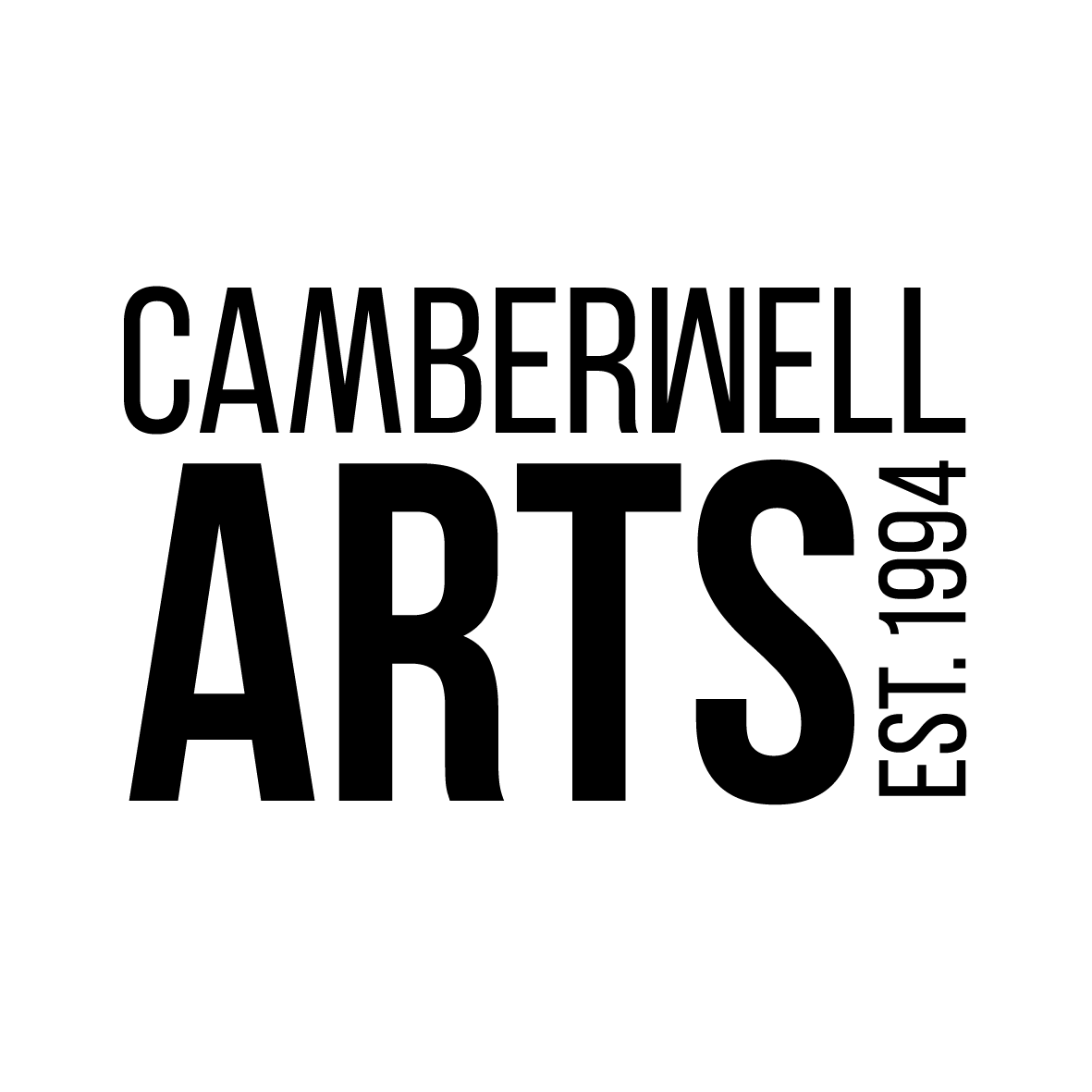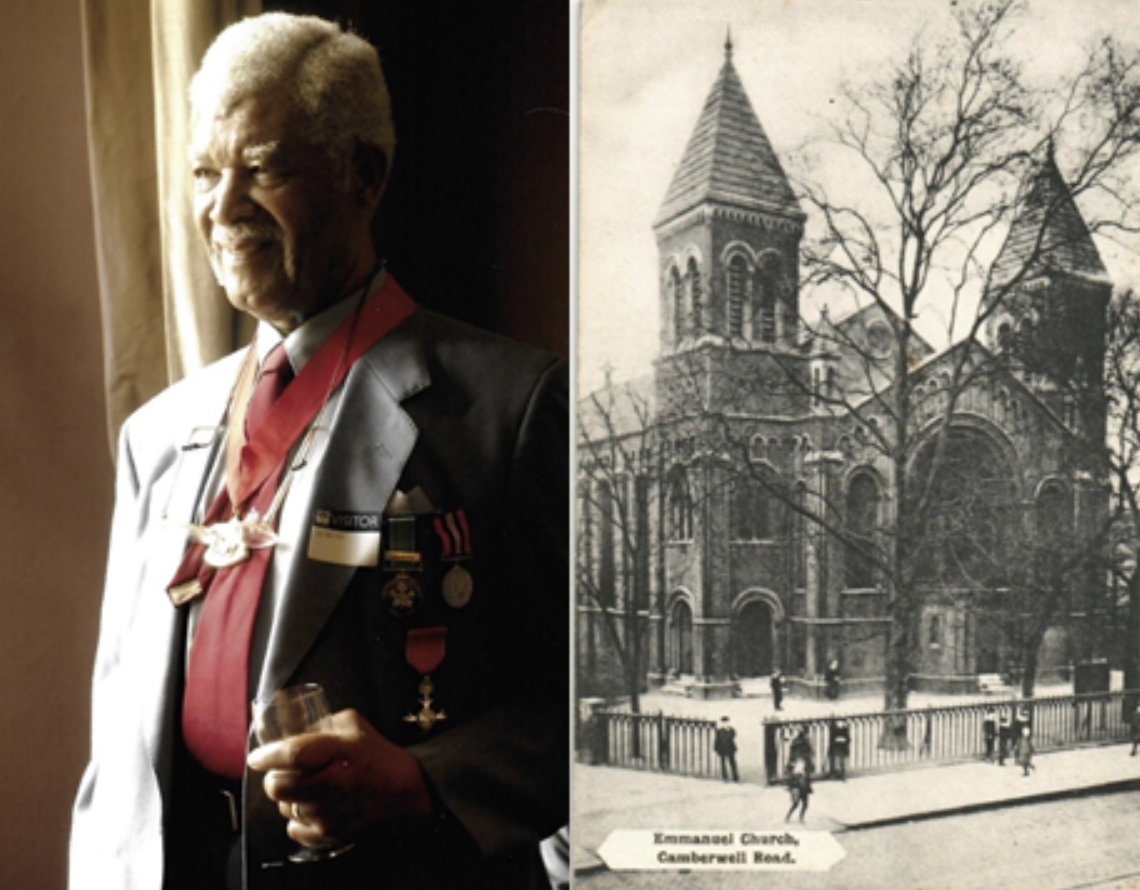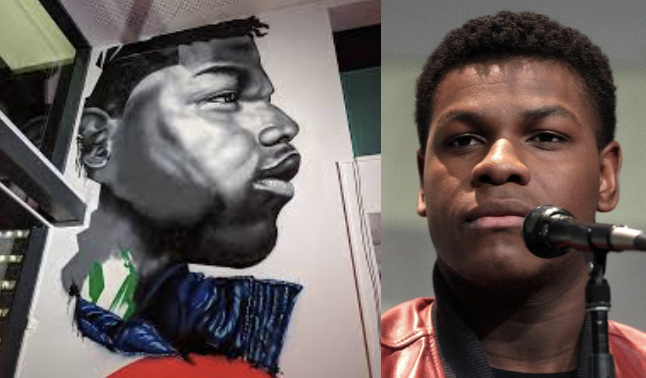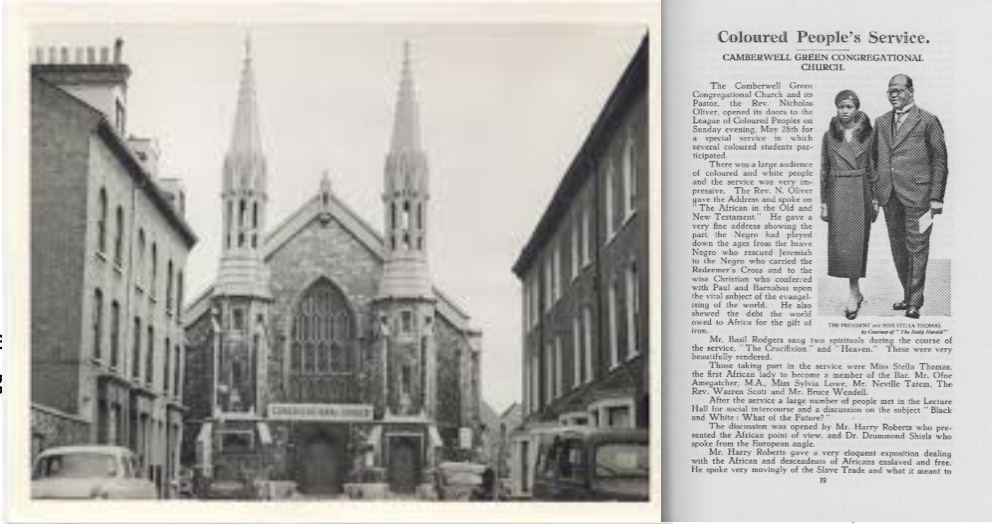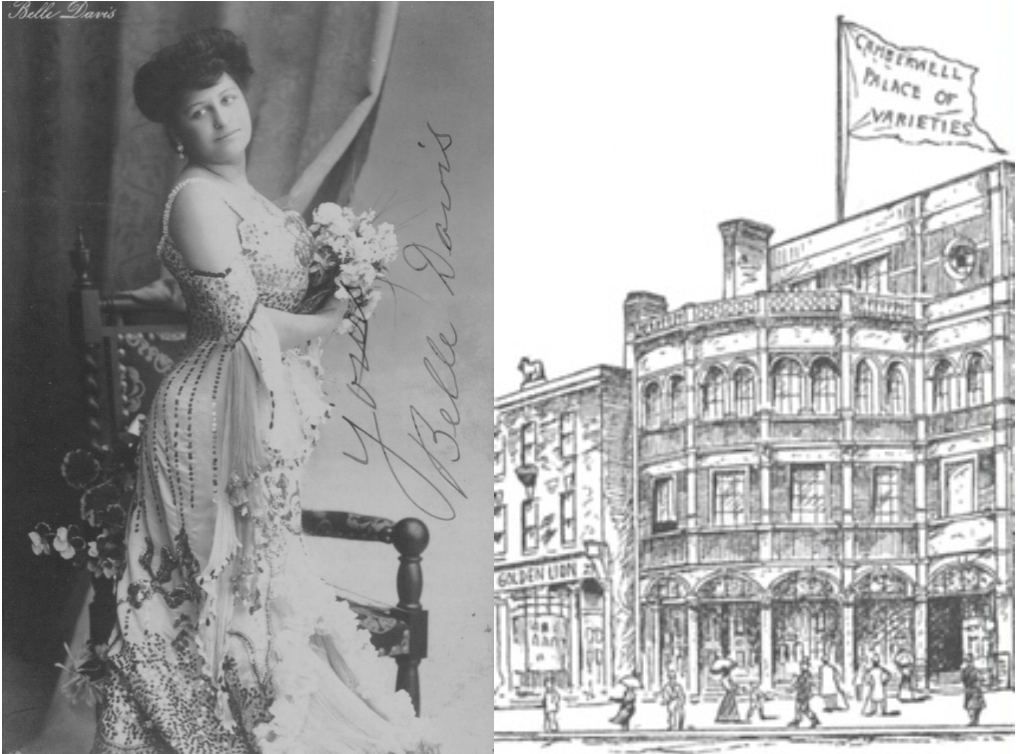Black History Walk
Researched and written by Stephen Bourne
Stephen Bourne was born in St Giles’ Hospital, Camberwell SE5 and attended Oliver Goldsmith Primary School from 1962-1969. He was raised on the Sceaux Gardens Estate in the 1960s and 1970s. Stephen is a historian and his many black British history books include the following:
Black in the British Frame: The Black Experience in British Film and Television, Continuum, 2001, ISBN 0826455395
Speak of Me As I Am: The Black Presence in Southwark Since 1600, Southwark Council, 2005, ISBN 0905849426
Dr Harold Moody, Southwark Council, 2008, ISBN 978-0905849430
Esther Bruce: A Black London Seamstress, History and Social Action Publications, 2012, ISBN 978-0954894375
Evelyn Dove: Britain's Black Cabaret Queen, Jacaranda Books, 2016, ISBN 9781909762350
War to Windrush: Black Women in Britain 1939-1948, Jacaranda Books, 2018, ISBN 9781909762855
Black Poppies: Britain's Black Community and the Great War (2nd edition, revised and updated), The History Press, 2019, ISBN 978-0750990820
Under Fire: Black Britain in Wartime 1939-45, The History Press, 2020, ISBN: 978-0750994354
He also writes extensively on other subjects. Many thanks to Jane Moxham for the accompanying pictorial map.
Edited by Tony Coleman for the Camberwell Society
1. Start on the Green
Leave the green at the southwest corner and carefully cross to the opposite corner (south side of Camberwell New Rd). Go right (walking west toward the Oval) and then after 50yds take the first left which is Warner Rd. On your left are a row of housing blocks making up the Samuel Lewis Trust Estate.
2. Warner Road, Camberwell SE5
South side of block 301 – 348 (3rd along). Southwark Heritage Blue Plaque for George A. Roberts BEM, MSM (1890-1970) a 6’ 2” Trinidadian who served in the British Army in the First World War. According to the wartime magazine, Every Week, he distinguished himself by his "extraordinary" ability to throw bombs a great distance back into enemy lines, as he did with coconuts as a child.
He was active in the Royal British Legion from the 1920s and served as a fire fighter during the Second World War. In 1944 he was awarded the British Empire Medal "for general duties at New Cross Fire Station" and for his part as a founder and pioneer of the discussion and education groups of the fire service.
'If what I am doing can assist in some small way to bring about a better understanding and a true fellowship amongst the peoples of the earth, I shall be extremely happy' Roberts told the BBC radio programme 'Calling the West Indies' on 4 May 1947.
Left: George Roberts Right: Stephen Bourne with the plaque dedicated to George at its unveiling. Stephen had nominated George for the plaque and had vigorously campaigned in support.
Return to Camberwell New Road, cross and walk up Camberwell Rd going north for 5 minutes to the corner of Blucher Road.
3. Site of Emmanuel Church, Camberwell Road SE5
Bishopsmead, a block of flats on the Castlemead estate in Camberwell Road, was built on the site of Emmanuel Church. Sam King MBE (1926-2016), a Jamaican, was married at this church in 1954. He was a Camberwell resident at the time, living in nearby Sears Street (see righ). Sam served as an engineer in the RAF during the Second World War being stationed at RAF Hawkinge, a fighter base near Folkestone in Kent.
After the war he returned to Jamaica but came back to Britain on the Windrush in 1948. He helped to found the West Indian Gazette, the first newspaper in Britain written specifically for a black readership. He was also a co-founder of the Notting Hill Carnival.
Active in local politics, in 1983 he was elected Mayor of Southwark becoming the only black mayor in London at that time. In 1996 he helped to set up the Windrush Foundation and campaigned on behalf of settlers in the UK who came from the Caribbean.
At his funeral on the 19th July 2016 Jeremy Corbyn, the then Labour leader, paid tribute describing him as a “legend”, saying “He educated Londoners with Caribbean food, Caribbean culture, Caribbean music. London is a better place; Britain is a better place thanks to him and his family.”
Carry on up Camberwell Road to the lights and cross, walking east along Bowyer Place. Take the third on the right turning into Sears St [3] where Sam King lived when he worked as a postman. Go down Sears St to the bottom. Left into Notley St, then right into Edmund St. You will pass the end of Sam King Walk on the left, also [3]. Continue south, and after the Picton St junction the road turns into Benhill Rd. You will pass the Benhill Rd nature garden on the right (see the Camberwell Church Tree Walk). After 5 further minutes turn left into Brunswick Park.
4. 16 Brunswick Park SE5
Southwark Heritage Blue Plaque for Una Marson (1905-1965), poet, feminist and first black woman programme maker at the BBC (1940-1945).
Una was born in Jamaica where she founded her own magazine, The Cosmopolitan, aimed at a young middle-class Jamaican audience. Her articles encouraged women to join the work force and to become politically active. The magazine also featured Jamaican poetry and literature. In 1930, Marson published her first collection of poems, entitled Tropic Reveries, that dealt with love and nature with elements of feminism. It won the Musgrave Medal from the Institute of Jamaica.
She first arrived in London in 1932 and stayed at the home of Dr Harold Moody (see below). From 1932 to 1939, she moved back and forth between London and Jamaica. She wrote for newspapers advocating feminism and highlighting race issues in England.
In 1941 she was hired by the BBC to work as the producer of the radio series Calling the West Indies. This was broadcast to the Caribbean on the BBC’s Empire Service. One of her roles was to invite West Indian servicemen and women into the studio to read messages to their families in the Caribbean. She also introduced a literary segment called Caribbean Voices which enabled many Caribbean authors to broadcast their poems and short stories. More than 200 authors appeared on the show including many leading literary figures. Caribbean Voices has been described as "the single most important literary catalyst for Caribbean creative writing." After the war Una moved back to Jamaica but Caribbean Voices continued until 1958 when the BBC replaced the Empire Service with the BBC World Service.
Continue east along Brunswick Park with the park to your left. At the end you will see the former St Giles Hospital in front of you with its attractive gables and towers.
5. Former St Giles’ Hospital, St Giles’ Road SE5
Southwark Heritage Blue Plaque for the actress Marianne Jean-Baptiste who was born there in 1967 to a mother from Antigua and a father from St Lucia. She was classically trained at the Royal Academy of Dramatic Art.
In 1996 Marianne was the first black British actress to be nominated for an Oscar for Mike Leigh’s acclaimed film Secrets and Lies, for which she was also nominated for a Golden Globe and a BAFTA.
In 1999 she was acclaimed for her role as Doreen Lawrence fighting for justice for her son’s killing in Paul Greengrass’s TV drama The Murder of Stephen Lawrence.
Relocating to the USA, she was seen in the popular TV series Without a Trace (2002-2009). On a rare visit to the UK, she was much praised for her stage performance in the 2013 Royal National Theatre production of James Baldwin’s play The Amen Corner. It was during this trip that she attended the unveiling of her Southwark Heritage Blue Plaque in Camberwell.
Turn to your right and walk south on St Giles Rd until you get to the main road, Peckham Rd. Turn left and then take the first left again into Havil St. Walk 100 yds up Havil St and on your right you will come to Theatre Peckham.
6. Theatre Peckham, 221 Havil Street SE5
The foyer of Theatre Peckham includes a mural (unveiled in 2020) of the internationally acclaimed actor John Boyega who plays Finn in the Star Wars films.
John is of Nigerian decent and is a former student of Theatre Peckham. He was also a pupil at the Oliver Goldsmith Primary School (also in Camberwell on the corner of Peckham Road and Southampton Way SE5). He was raised on the Sceaux Gardens estate in SE5 which backs onto Theatre Peckham.
His first acting role was as a leopard in a play while at the Oliver Goldsmith Primary School. While acting in another play there at the age of nine, he was noticed by Teresa Early, the artistic director of Theatre Peckham, a learning theatre for young people. He spent his time there outside school hours between the ages of nine and fourteen.
He trained at the Identity School of Acting in Hackney and became patron of its Los Angeles branch when it opened in 2018.
He made an early film appearance in Attack the Block (2011) and received the 2015 BAFTA Rising Star Award. In June 2020 he was active in the Black Lives Matter demonstrations in London that followed the murder of George Floyd in the US at the hands of the police.
Walk back up to the main road and cross. Turn right and walk for 4 minutes until you see Wilson Road on the left. Turn into Wilson Rd, cross and very shortly you will see the entrance to St Giles Churchyard on the right.
7. St Giles’ Church, Camberwell Church Street SE5
John Primero was a servant to Sir Thomas Hunt. He was baptised at St Giles' Church on 3 April 1607 and he is described in the Parish Register as "a negro".
The witnesses included Sir Thomas Hunt himself, Mr Cox and Mrs Mary Grymes. When Primero died a few years later, his burial was registered at St Giles' Church on 13 February 1615 "for Sir Thomas Hunt" who is described by William Harnett Blanch in Ye Parish of Camberwell (1875) as the "Sheriff of Surrey and Sussex". Hunt died in Camberwell in 1625.
The old church was destroyed in a fire and the new church was built in the 1840s. It was designed by Sir George Gilbert Scott.
Follow the path that runs diagonally across the churchyard and exit via Churchyard Passage, a narrow passage that will bring you out onto Camberwell Grove. Cross diagonally right and walk through to Grove Lane via Mary Boast Walk alongside the Grove Tavern pub. Turn Right on Grove Lane and walk north for 2 minutes until you see Daneville Road on the left, Turn left here and walk across the car park toward the Butterfly Walk shopping centre. Turn right onto the roadway outside the Morrisons store and follow round to the front of the building called the Colonnades which will now be on your right.
8. Wren Road, Camberwell Green SE5
Dr Harold Moody was born in Kingston, Jamaica, in 1882, the son of a pharmacist. In 1904 he sailed to the United Kingdom to study medicine at King's College, London. He finished top of his class when he qualified in 1910, aged 28. Dr Moody started his own medical practice in Peckham in February 1913.
In addition to his work as a popular GP, he was a highly respected community leader for Britain’s black community from the 1920s to the 1940s.
In 1931 he formed the League of Coloured Peoples (LCP). The League was concerned with racial equality and civil rights in Britain and elsewhere in the world. The visitors book at Dr Moody’s home in Queen’s Road, Peckham included many notable black people such as C. L. R. James, Jomo Kenyatta, Una Marson (see above), and Paul Robeson.
He became involved in the administration and running of the Camberwell Green Congregational Church in Wren Road where he became a deacon and lay preacher. The site of the church is now occupied by the apartment building called the Colonnades. If you walk a little way up Wren Rd and turn round you can see how the church had a dominating position.
In 1944 there was a terrible incident in New Cross when a V2 rocket fell on the shopping centre. Nearly 200 were killed and hundreds injured. Dr Moody was one of the first on the scene. In the winter of 1946-47, Dr Moody made a strenuous five-month fund-raising tour of the USA and the Caribbean but on his return home he died of acute influenza on 24 April 1947.
His funeral service took place at the Camberwell Green Congregational Church on 1 May 1947. A bronze portrait of Dr Moody by his brother Ronald is displayed in Peckham Library.
Retrace your steps back past the Colonnades and, keeping Morrisons entrance to your right re-join Daneville Rd. Turn right and then turn right again into Orpheus St. Follow the road past the bus stands and round to the left until it joins the main road Denmark Hill
9. Corner of Orpheus Street and Denmark Hill, site of the Camberwell Palace of Varieties
Belle Davis was one of many black stars to become successful in music halls in the Edwardian era. She was an American expatriate, born in New Orleans, of European and African ancestry. The tall, beautifully dressed soprano spent most of her adult life in Britain. She stood out from other black or blackface singers/entertainers of the Edwardian era by performing songs that did not come from the minstrel show tradition. Belle sang graceful melodies and comic numbers. On stage she presented herself as a sophisticated, elegant woman of the world, not the stereotypical bandanna-wearing ‘mammy’.
Belle first toured Britain in 1897-98 but, when she returned to the UK in 1901, she decided to make her home here. In London in 1902 she became one of the first black women to have her voice recorded when she took to a microphone to sing ‘The Honey-Suckle and the Bee’, one of the most popular music hall songs of the day. She toured Britain extensively from 1901 to 1918 and appeared in music hall tours that took her all over the country. In London she topped the bill in many music halls including Brixton, Walham Green and Clapham. Belle made the first of several appearances at the Camberwell Palace of Varieties on 24 November 1902. She returned there many times.

